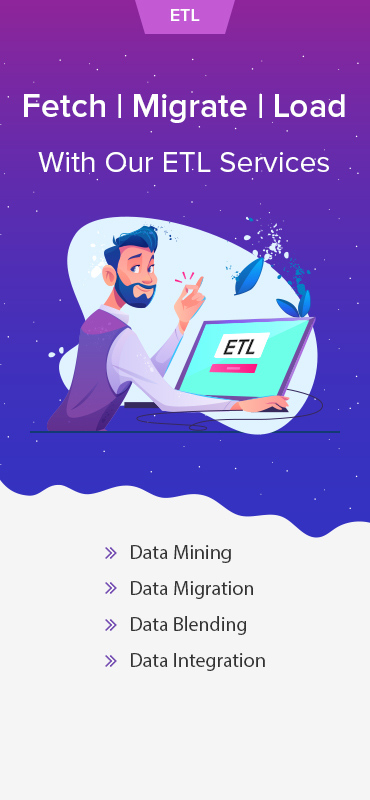Wonder the difference between ETL and ELT?
In a nutshell, ETL enables you to transform and integrate structured data into a data warehouse, while ELT helps you do the same with unstructured data.
Together, ETL and ELT are critical steps in the data analytics process. In this blog post, you’ll find answers to the following questions –
- What is ETL?
- What is ELT?
- What are the differences and similarities between ETL and ELT?
So, let’s get started!

What is ETL?
ETL stands for Extract, Transform and Load.
It is a data integration process that enables you to extract, transform, and load data from a number of sources to a data warehouse.
ETL speeds up the transfer of data to the destination, increasing its accessibility.
It cleans and organizes data to enable you resolve business challenges, as well as perform advanced analytics.
Here’s how it works –
Extraction: In this step of the process, you copy or export data from a source location to a staging area. The sources contain data that may be structured or unstructured.
Transformation: Here, raw data is transformed for your analytics use-case.
The ‘transform’ phase may involve filtering data, performing calculations, conducting data audits, protecting data, as well as formatting data.
Loading: In the final step, transformed data is moved from the staging area to a data warehouse.

What is ELT?
ELT stands for the same terms, but in a different order.
To be precise, it is a data integration method that enables you to extract, load and transform data from a number of sources to a data warehouse.
ELT helps you move data to the destination quicker, for faster availability. It enables you to transform data with on-demand flexibility and scalability.
It is more commonly used with unstructured data.
What are the differences and similarities between ETL and ELT?
ETL and ELT are both data integration processes that transfer raw data from a source system to a target database.
Before we look at the key differences and similarities between the two processes, let’s look at a similar term you may have chanced upon.
Reverse ETL. Now, this is a technology that enables you to take clean and processed data from the data warehouse and ingest it into applications such as Salesforce.
Here, you can use the data for business operations, as well as forecasting.
Reverse ETL helps you perform advanced analytics that may not be possible with business intelligence tools.
Now, let’s dive into the differences between ETL and ELT, with there being two major ones.
First, while data undergoes transformation on a separate server in ETL, it is transformed within the data warehouse, in ELT.
Second, raw data does not get transferred to the data warehouse in ETL, while in ELT, it is sent directly to the data warehouse.
In addition to this, data ingestion is slow in ETL since data is transformed on a separate server. On the other hand, ELT provides faster data ingestion.
This is because data is not sent to a separate server. In fact, ELT enables you to load and transform data at the same time.
Furthermore, ELT helps you create a historical archive for business intelligence, since it retains raw data.
However, with ETL, you cannot create complete raw datasets for querying.
It is these differences that give you increased flexibility, efficiency, and scalability with ELT to ingest big data, process structured and unstructured data, and more.
ETL, on the other hand, is more suited for data workflows requiring manipulation before entering a target system.
Here’s a table to help you compare ETL with ELT:

Wrapping Up
You now have a clear understanding of the differences and similarities between ETL and ELT.
No one process is ‘better’ than the other, because your decision to use either one will depend on your data and processing requirements.
Make sure you understand your data sources and the end result you’re looking for, before you go for either ETL or ELT.
Need Help Deciding Whether to Go For ETL or ELT?
At Grazitti, the data analytics team knows a thing or two about ETL and ELT.
Should you want to know more, please write to us at [email protected] and we’ll take it from there.











